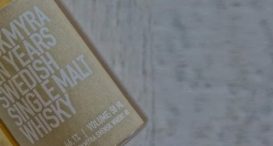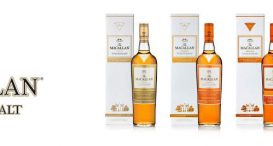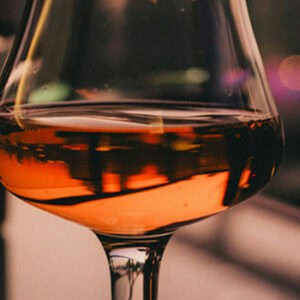Different Oaks Used in Whisky Maturation – How Different Casks Impart Different Flavours
Oak. To some it’s simply a fancy type of wood that makes premium-quality furniture, and comes from a tree associated with Robin Hood and Sherwood Forest. To whisky distillers however, oak is a wood that can literally make or break any batch of whisky.
Whisky can be enjoyed on all occasions, any time, and any place. Finding a great tasting whisky however, is easier said than done. Sure, we’ve plenty of tipples that taste just fine, but sometimes we want something that’s much nicer than “fine”. Why settle for mediocrity when we don’t have to?
Whisky distillers across the globe understand the importance of producing the best possible whisky/whiskey that they can, which is why they place such an emphasis on wood. In particular, a very specific type of wood – oak.
When whisky is left to mature and age in oak casks, all kinds of magical things begin happening to it.
Not only does it take on a wide range of different colours, it also adopts a number of different tastes, aromas, and finishes too.
Here’s a look at several ways in which different types of oak casks can impart different characteristics during the maturation process.
Oak and whisky
In the past, whisky used to be aged and matured in all manner of different casks, made from a variety of different woods. Nowadays however, by law, whisky must be aged and matured in casks made from oak.
Oak is a very strong and durable wood, yet it is also easy to be made into casks. It has very tight grains that make it perfect for leak prevention, while also being very porous, thus allowing more oxygen into and out of the cask to help the whisky do its thing.
As whisky matures, it draws naturally occurring oils out of the oak, which are called ‘vanillins’. These oils then help to alter the profile of the whisky, giving it a different colour, different aromas, different mouthfeels, and even a different flavour.
So, if all whisky has to be aged in oak casks, why do so many whiskies taste, look, and smell so incredibly different? Oak is oak, and whisky is whisky, so what gives? Well, it all comes down to the fact that different types of oak cask are used, which have also stored different liquids in the past.
Different types of oak casks
Oak trees are found all over the globe, yet oak trees in Europe, America, and Asia are very different to one another.
Here’s a look at the key differences between each one.
European Oak
European oak is primarily used to mature whisky produced in Scotland and Ireland. This has been the case for hundreds of years.
Scotland and Ireland used to use oak from Scotland and England, but the problem is that the grains on this oak were not as fine as other European oak trees, and so the casks would leak. To the distiller’s dismay, they’d find their precious whisky seeping out of the casks and going to waste. This certainly was no ‘Angel’s Share’.
Needing an alternative, they sourced oak from Russia. Because the oak was from a colder, much harsher climate, it was tougher and did not leak. The problem is that, like most decent things in life, it was expensive.
After the Spanish imported their sherry in Spanish oak casks to the UK, distillers looking to save a few pennies would rinse them out and use those casks to age their whisky instead. These casks were also very strong and durable, but were a lot cheaper than those from Russia.
To this day, Spanish sherry casks, such as Oloroso Sherry casks, are still used in the whisky-making industry, despite being much more expensive. As the saying goes ‘you get what you pay for.’
European oak tends to offer spicier, more bitter notes and deeper amber, even red colours.
American Oak
American oak has been used in this industry for close to a century now.
After WWII, a law was passed which stated that whisky had to be aged in brand-new oak casks. This was mainly done to help boost the cooper industry, which had took a hell of a pounding during the prohibition era.
This was all well and good, but a few years later and there was suddenly a surplus of oak casks available, and nothing to put in them. As bourbon whisky became more popular, this certainly helped, but there were still too many.
They were gradually sent oversea to Ireland and Scotland, as some Irish and Scottish distillers began using them. As there were so many, they were very affordable, and were sometimes even free.
American oak is ideal for whisky maturation. So much so in fact, that nearly 90% of the world’s whisky is matured in American ex-bourbon casks.
American oak usually offers mild notes of vanilla and caramel, with a much mellower, smoother finish than its European counterpart. It also gives the whisky a golden colour.
Japanese Oak
Finally, we have Japanese oak.
Japan loves its whisky, and the Japanese whisky-making industry is growing every single year.
Since the 1930s, Japan has been using a special type of oak for their casks, called Mizunara Oak.
Mizunara oak is extremely porous and soft, and is packed full of vanillins. The casks are therefore very prone to leakage and very sensitive.
We dread to think how much precious whisky went to waste in Japan over the years, which is why they mainly use ex-bourbon and sherry casks, just like in Europe and America. Japanese oak however, is still used. What tends to happen here is that the whisky is transferred to the Mizunara oak casks at the end of maturation for a shorter period of time, just to help it take on those extra characteristics you just don’t get with other types of oak.
Japanese oak offers unique floral notes of Asian spices, sweet coconut, fresh apples, and sandal wood. You can expect light golden honey colours from this particular wood.
Charring and toasting
In America particularly, you’ll find that casks are charred and/or toasted in preparation for whiskey maturation.
It sounds extreme, but it provides an incredible depth of flavour and stunning colour to the whiskey. The inside of the oak cask will be set on fire and charred. This creates a layer of charcoal which is used to help filter out any impurities. Yep, charcoal isn’t just great for getting your BBQ going, it’s also a fantastic filtration media.
The toasting process requires the casks to be toasted over an open flame so as to caramelise naturally occurring sugars found within the wood. This process helps to create sweeter flavours and offers notes of nuts and honey. It’s the same principle behind caramelising onions to make them sweeter.
Charring and/or toasting the oak casks helps with filtering out any impurities, while also adding extra notes to the whiskey, as well as a much deeper ruby amber colour.
Cask seasoning
One of the main reasons why we get so many different and unique types of whiskey/whisky is because the oak casks have to be seasoned before the spirit can be left to mature.
Before being filled with whiskey, these wooden casks need to first be “seasoned” by being filled up
with an alternative liquid to whiskey.
Typically, you’ll find that those in the whisky distilling industry will use oak casks that have been used to store liquids like:
Sherry and fortified wine such as port or madeira
Bourbon
Red or even white wine
Beer or lager
Seasoning the barrels beforehand is very important, as it helps the pores in the wood to open up, allowing the whisky inside to penetrate deeper as it matures. Not only that, but it also allows for more tannins in the wood to be drawn out before the whisky goes in. Don’t get us wrong, tannins when brewing are very important when it comes to things like mouthfeel, but too many and the spirit can be bitter.
Once the whisky goes into casks that have previously been used to store other spirits, it then takes on notes and characteristics of the liquid it has taken the place of. A whisky stored in an ex-sherry cask for example, will take on sweeter notes and colours which are similar to the sherry. A whisky stored in an ex-beer cask, however, may take on more bitter notes. In the past, distillers would even store their whisky in casks which used to contain salted herring and other fish, though this was simply due to them having no alternative. Needless to say, the whisky matured in these casks took on slightly, shall we say, unusual characteristics.
If you’re looking to grab yourself a bottle of your favourite whisky, or even try something new, make sure you check out https://greatdrams.com/ and the huge selection of whiskies available.
Here you’ll find everything you need to know about whiskey/whisky, and can purchase some of the most stunning and unique whiskies on the market today.














